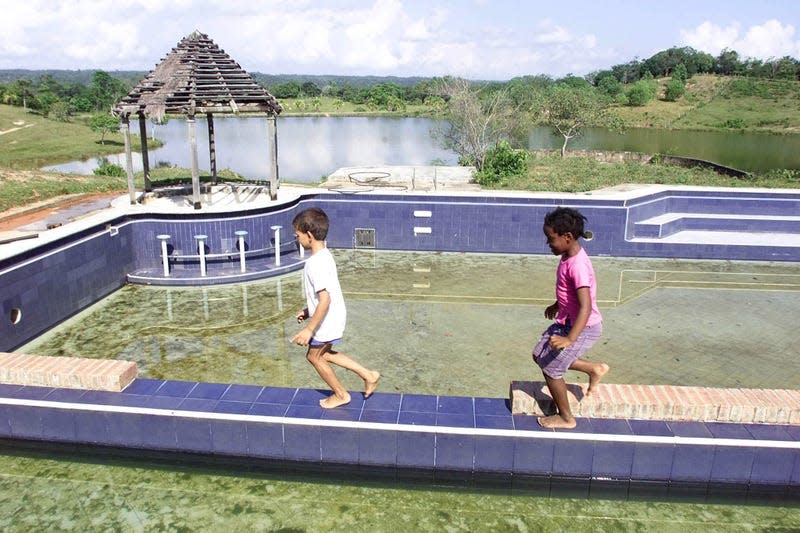Pablo Escobar's pet hippos are becoming a problem for Colombia's ecosystem

Wild hippos lurk in the muddy waters of Escobar’s abandoned ranch.
The Colombian government wants to export about 60 invasive hippopotamuses that have escaped the former ranch of drug lord and cocaine exporter Pablo Escobar. Wildlife sanctuaries in India and Mexico have offered to take in the creatures.
Well-known for his love of exotic animals, Escobar installed a zoo at his Hacienda Napoles, a sprawling ranch east of Medellín with giraffes, elephants, ostriches, and other species not native to Colombia. When Escobar was killed by police in 1993, four hippos lived on the ranch. Thirty years later, there are approximately 130 hippos in Colombia, all descended from Escobar’s original pets.
Read more
The hippos have reportedly adjusted well to life in Colombia’s favorable climate. However, without any natural predators, they have become an issue for Colombia’s ecosystem, with the government declaring them an invasive species last year.
Scientists in the region warn hippo feces changes the composition of local rivers, impacting the habits of manatees and capybaras.
According to the government’s proposed plan, the hippos would be trapped in large, iron containers and driven about 150 kilometers to the Rionegro airport, where they would be flown to Mexico and India. The plan only includes the hippos that have left the ranch and gone feral in the Magdalena River.
Pablo Escobar’s cocaine empire, by the numbers
Considered the wealthiest criminal in history, Pablo Escobar led the largest international drug cartel for decades.
$320 million: Escobar’s weekly earnings at the height of the drug trade, putting his cartel’s annual profits around $22 billion.
$2.1 billion: Money Escobar reportedly lost every year because he kept his entire fortune in cash in dilapidated warehouses on his property and behind the walls of cartel members’ houses, vulnerable to weather and pests.
$10 billion: Colombia’s total debt in the early 1990s. Escobar offered to pay it off with his personal wealth if the country exempted him from a new extradition treaty Colombia had signed with the US.
4,000: The number of people murdered on Escobar’s orders, mostly police officers and government officials.
$2,500: The amount of money Escobar’s cartel spent monthly on rubber bands to hold stacks of cash together.
80%: The percentage of the world’s cocaine supplied by Escobar at the peak of his drug empire.
20: Escobar’s ranking in Forbes’ 1989 annual list of the richest people in the world.
Wild hippos in Colombia, a timeline
1993: After Escobar is killed, his ranch is looted and seized by local authorities. It is eventually left vacant, and Escobar’s four hippos are abandoned on the grounds.
2006: Ownership of the ranch /is / passes to the Colombian government, which sends the remaining animals to zoos around the country. However, the hippo population has spread so wide, it is considered too difficult to round them up.
2013: National Geographic produces a documentary about the animals called “Cocaine Hippos.”
2014: A Jurassic park-style theme park is opened at the ranch, leased from the government by a private company. There are about 40 hippos living in the park, with dozens more in the lakes and rivers surrounding it.
2022: The Colombian government officially declares the hippos an invasive species.
Related stories:
🇨🇴What Colombia’s presidential election means for its economy
✍️A new report suggests Pablo Neruda was poisoned in the aftermath of Chile’s 1973 coup
More from Quartz
What higher H-1B fees will mean for Indians hoping to work in the US
More than half of US nursing homes are unprofitable—and it's about to get a lot worse
Sign up for Quartz's Newsletter. For the latest news, Facebook, Twitter and Instagram.

